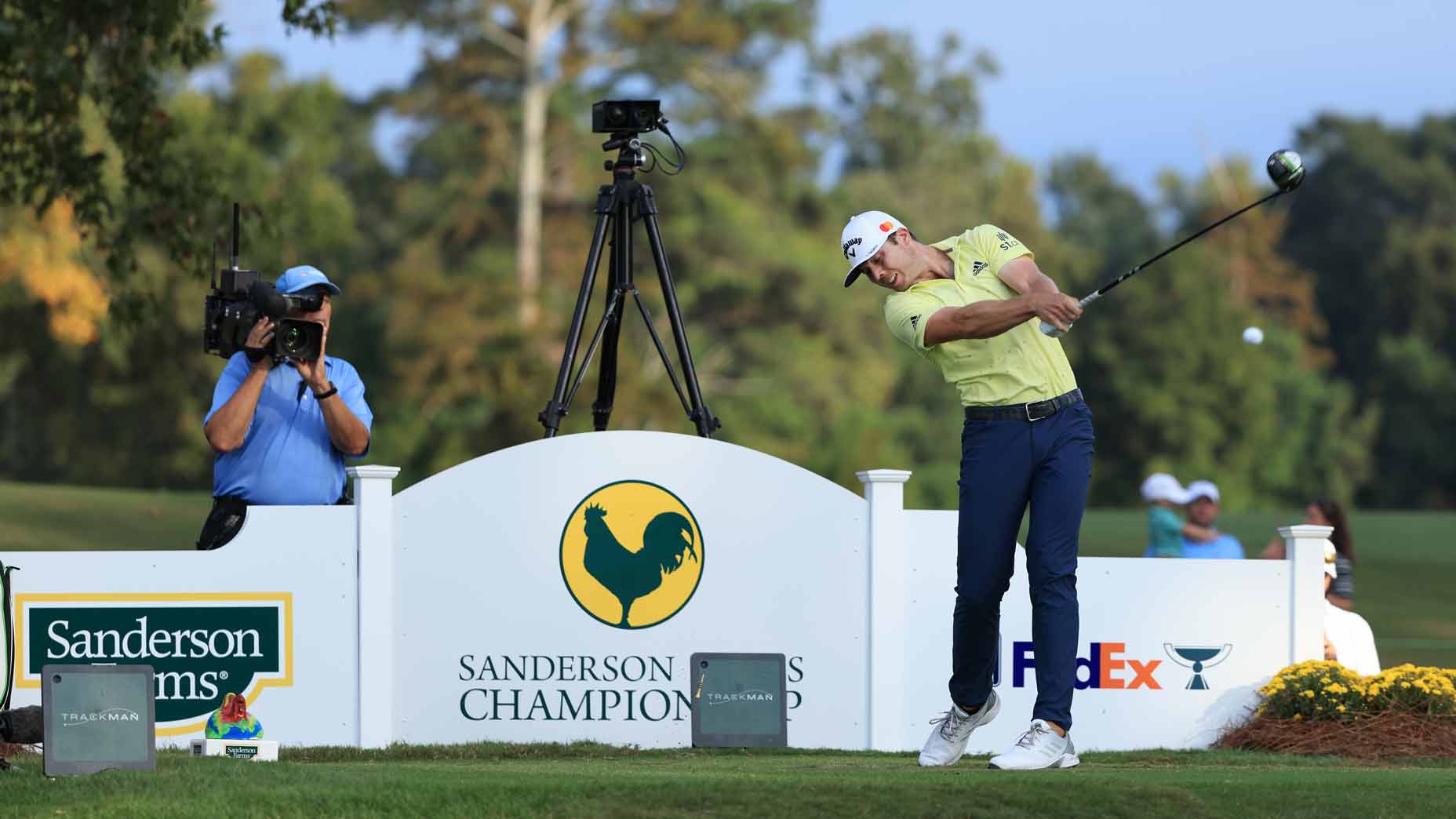5 takeaways from golf’s early-season TV ratings bonanza

Jordan Spieth's return to relevancy has proven a powerful narrative for television viewers in the early portion of the 2021 season.
Getty Images
Those who pay close attention to Nielsen ratings know the last 12 months have been particularly brutal for the sports industry. As if empty stadiums, intensive protocols and disrupted schedules weren’t enough to tip the sports world off its axis, television has proven equally volatile.
Nearly every major professional sports league faced ratings pratfalls in 2020. As leagues raced to complete their seasons by any means possible, viewership fell behind. The Stanley Cup Finals were down 61 percent year-over-year. In the NBA, already-dipping Finals ratings were dealt a 51 percent year-over-year blow. Baseball witnessed its lowest World Series numbers EVER. Not even golf could escape the viewership gap — the November Masters produced the tournament’s lowest final round rating in a half-century.
But as the calendar flipped to 2021, golf appeared to rebound. The first promising sign came at a trio of early PGA Tour events — the Tournament of Champions, Sony Open and American Express. All three events showed subtle year-over-year gains, a noteworthy achievement particularly compared to 2020’s pre-Covid numbers. Still, the improvements amounted to 100,000 or so total viewers, hardly anything to write home about.
The changes didn’t fully materialize until a few weeks later, when the PGA Tour headed west for its annual California swing. In consecutive weeks at the Waste Management Phoenix Open and Farmers Insurance Open, networks saw gains approaching a half-million viewers on typical audiences of 2.5-3.5 million. Then, as Jordan Spieth carried a two-stroke lead into the final round of the AT&T Pebble Beach Pro-Am a week later, the floodgates opened. Daniel Berger’s eventual win at the AT&T would prove the largest television audience for a regular season PGA Tour event in two years, with 4.14 million people helping CBS push 19 percent year-over-year gains for the event.
The ratings news — while certainly welcome for the PGA Tour — comes with a caveat: it’s damn near impossible to understand what it all means. Below, we try to help you make sense of the PGA Tour’s ratings bonanza
5 takeaways from the early-season PGA Tour ratings
1. The Covid golf bump is real
You’ve heard already how 2020 proved a record year for golf, with nearly 36 million total golfers contributing toward a 14 percent gain in rounds played, according to the National Golf Foundation. The sport’s growth over the last 12 months has been undeniable — even after the initial outbreak caused a significant percentage of courses in the United States and abroad to close for a month or longer.
Skeptics argue the gains are an outlier driven by an unusual set of circumstances set forth by the pandemic. Others argue it would be unwise for the industry to expect the sport will retain the large numbers of first-time players who were introduced to the game in 2020. But these viewership gains — particularly at bigger-name events like the Waste Management and AT&T — would appear to show the sport’s growth has extended into the professional game.
Not only is golf seeing year-over-year growth, it is also seeing growth relative to other professional sports. While ABC’s coverage of a Trailblazers-Lakers primetime Saturday matchup outpaced the Waste Management in 2020 by nearly 1.5 million viewers, this year’s Warriors-Mavericks game in the same time slot fell nearly 1.5 million viewers behind the golf. Sure, factors like game quality and playoff implication are at least partially at work for the NBA. Still, that’s a swing just shy of 3 million television viewers — or close to the Waste Management’s entire audience size — in just one year.
2. So is the Jordan Spieth bump
Much like the NBA, golf is a star-driven sport. It’s not rocket science; when a sport’s best players play well, they tend to draw bigger audiences. In that case, perhaps it’s more than a coincidence that Jordan Spieth’s recent revival has coincided with some of the sport’s best numbers in years.
Golf’s former golden boy (and three-time major champion) is showing signs of life after nearly three years in the gutter, racking up a pair of top-10 finishes and flirting with the lead at Riviera over the weekend. A Spiethian renaissance could be exactly what professional golf needs to capitalize upon the moment in the recreational game, and there’s no questioning that his game rarely lacks for entertainment value.
3. Winter weather has played a role
Environmental factors play a bigger role in sports television ratings than most people realize. When it snows in a large portion of the country on the day of the Super Bowl, for example, ratings tend to drop in line with fewer gatherings.
This has been a long winter for large swathes of the United States battered by cold arctic air. That sort of weather generally correlates with a small bump in ratings for many networks.
4. Golf is well-positioned in the post-football winter months
The end of the NFL season leaves a gaping hole in the sports conscious — a hole that golf appears uniquely adept at filling in the present moment. With the NHL and NBA in full swing and MLB preparing to begin its season in April, it’s not as if there isn’t ratings competition, but golf is the beneficiary of owning the space previously occupied by football on weekend afternoons. Add in a healthy lead-in from college basketball and there’s a legitimate recipe for the PGA Tour to capture some of football’s viewership, particularly as sports fans continue to remain indoors due to the pandemic in the months ahead.
5. Maintaining momentum into the summer could prove uniquely difficult
As vaccinations continue to expand throughout the United States, experts are hopeful the country will grow closer to containing the virus as the weather begins to grow warmer in the spring and summer. In the (hopeful) event that happens, golf (along with the rest of the sports world) could see viewership declines as the population returns to normalcy.
While that’s far from a worst-case scenario for pro golf (especially if such developments mean the PGA Tour and other organizations can begin welcoming fans back to events), it’s something worth keeping in consideration in the months ahead.











